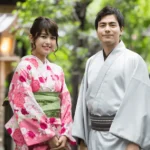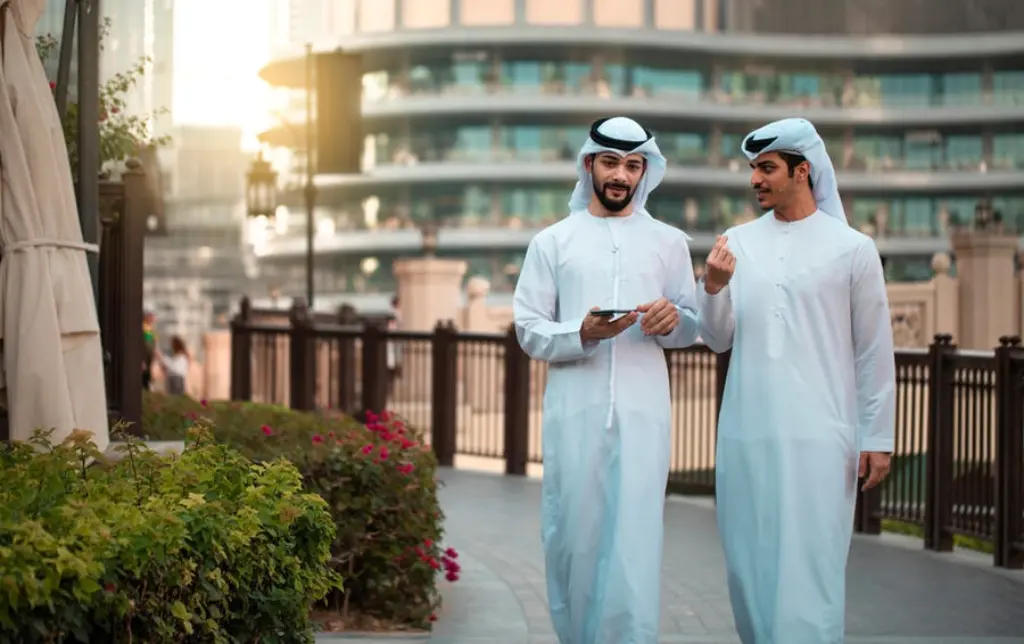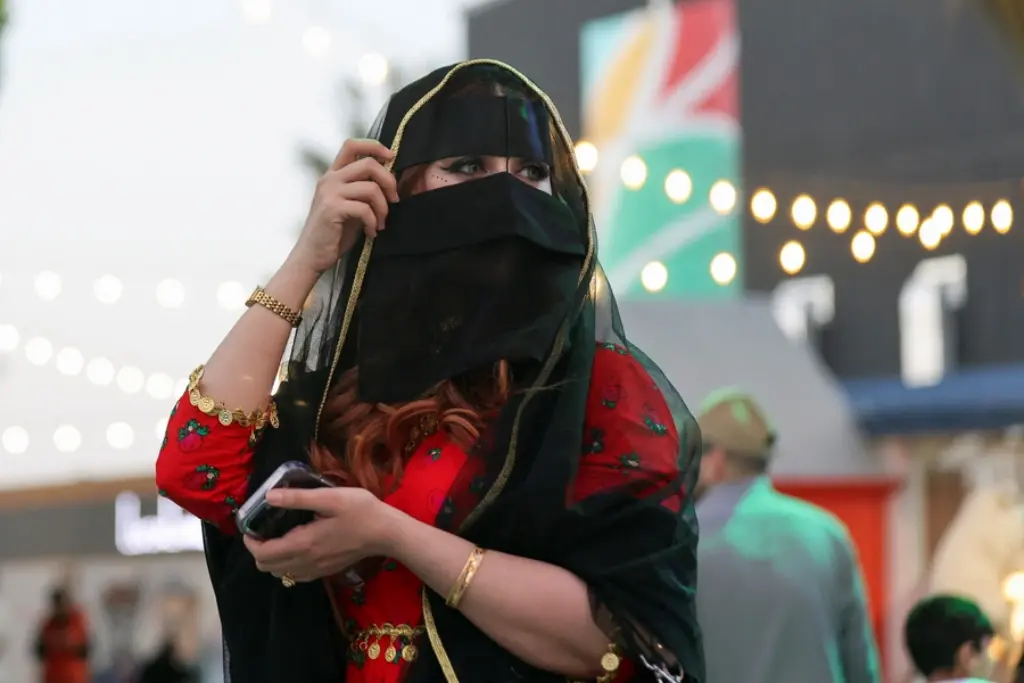Discover the timeless grace of Saudi traditional clothing — from the flowing white thobe for men to the elegant black abaya for women. Explore cultural roots, modern styles, and symbolic meanings.
Picture the golden dunes of the Empty Quarter at sunset — silhouetted against the horizon are figures draped in flowing white and graceful black. This is the visual poetry of traditional clothing in Saudi Arabia: the crisp, ankle-length thobe worn by men and the sweeping, often embellished abaya worn by women. Far from being mere garments, these pieces are woven with centuries of heritage, climate wisdom, religious values, and quiet sophistication.
In this article, we’ll uncover the history behind the thobe’s pristine folds, decode the evolving artistry of the abaya, and explore how these garments balance modesty with modern expression. Whether you’re curious about culture, fashion, or simply the stories behind what people wear — prepare to see Saudi style in a whole new light.
What Is Traditional Saudi Clothing?
Traditional clothing in Saudi Arabia refers to the historic and culturally significant garments worn daily by Saudi men and women. Rooted in Islamic principles of modesty and shaped by the desert environment, these clothes prioritize comfort, dignity, and simplicity — though today, they also embrace elegance and personal expression.
See also Traditional Ghanaian Clothing: The Symbolism of Kente Cloth
Traditional Ghanaian Clothing: The Symbolism of Kente Cloth
Key characteristics:
- Modesty: Loose-fitting, full-coverage designs aligned with Islamic dress codes.
- Climate-adapted: Lightweight fabrics for extreme heat; layering for cooler nights.
- Cultural identity: Worn with pride as symbols of national and religious belonging.
- Modern evolution: While rooted in tradition, both thobe and abaya now come in countless contemporary styles.
These aren’t costumes — they’re living garments, worn by millions every day across cities, villages, and deserts.
A Brief History: From Desert Practicality to National Symbol
Saudi dress didn’t appear overnight — it evolved over centuries, responding to geography, faith, and social norms.
Pre-Islamic and Bedouin Roots
Long before oil or skyscrapers, the Arabian Peninsula was home to nomadic Bedouin tribes. Their clothing was purely functional:
See also Traditional Clothing in Japan
Traditional Clothing in Japan
- Men: Wore simple wool or cotton wraps — precursors to the thobe — to shield from sun and sand.
- Women: Draped themselves in long, loose garments for modesty and protection.
Natural dyes (indigo, saffron) and handwoven fabrics were common. Ornamentation was minimal — survival came first.
Islamic Influence and Standardization
With the rise of Islam in the 7th century, modesty became central to dress. The Quranic principle of satr (covering the body) shaped garment design — leading to the loose, non-revealing cuts we see today.
The basic form of the thobe and early versions of the abaya became widespread, varying slightly by region but united in purpose.
Modern Era: Oil, Identity, and Global Gaze
In the 20th century, as Saudi Arabia unified and prospered, traditional dress became a marker of national identity. The government even subtly encouraged its use to reinforce cultural cohesion.
Today, under Vision 2030 — the Kingdom’s ambitious modernization plan — Saudi traditional clothing remains central to identity, even as fashion evolves and global influences grow.
Men’s Attire: The Thobe — Simplicity as Sophistication
For Saudi men, the thobe (also spelled thawb or dishdasha) is more than daily wear — it’s a statement of dignity, cleanliness, and cultural pride.

Anatomy of the Thobe
The thobe is a long, ankle-length robe with long sleeves and a tailored fit through the torso. Key features include:
- Collar styles: Stand-up (qabba), mandarin, or open neckline.
- Pockets: Often hidden or minimal — clean lines are prized.
- Sleeves: Tapered at the wrist, sometimes with decorative cuffs.
- Side slits: For ease of movement, especially when sitting or riding.
Fabrics vary by season:
- Summer: Lightweight cotton or linen — breathable and cool.
- Winter: Heavier wool or polyester blends — often in darker colors like gray, brown, or navy.
The White Thobe: Why It Dominates
You’ll see most Saudi men in crisp white thobes — especially in warmer months. Why?
- Heat reflection: White reflects sunlight, keeping the wearer cooler.
- Cleanliness: Dirt and stains show easily — encouraging frequent washing and neatness.
- Formality: White is associated with purity and is preferred for prayers, business, and official events.
That said, colored thobes are common in winter or for casual wear — deep blues, grays, and even subtle stripes or checks.
Accessories That Complete the Look
A thobe is rarely worn alone. Key accessories:
- Ghutra & Igal: The square headscarf (usually white or red-checkered) held by a black cord ring (igal). Protects from sun and sand.
- Bisht: A luxurious cloak worn over the thobe for weddings, Eid, or formal occasions. Often trimmed with gold or silver embroidery.
- Oud or Perfume: No outfit is complete without a spritz of traditional fragrance — a sign of hospitality and refinement.
Women’s Attire: The Abaya — Modesty Meets Modern Design
For Saudi women, the abaya is the cornerstone of public dress — a flowing outer garment that drapes over regular clothing. Once uniformly black and plain, today’s abaya is a canvas for creativity, elegance, and personal style.

What Is an Abaya?
The abaya is a long, loose robe, typically worn open or closed down the front. Traditionally black, it now comes in every color, fabric, and cut imaginable — while still adhering to principles of modesty.
Common styles:
- Open-front abaya: Worn like a coat over clothes.
- Closed abaya: Pulled over the head, often with snaps or zippers.
- Kimono-style: Flowing sleeves, minimalist lines.
- Tailored abaya: Fitted at shoulders or waist for a modern silhouette.
From Plain Black to Fashion Statement
Historically, the abaya was simple: black, unadorned, functional. But since the 2000s — and especially after 2018, when the religious police’s enforcement powers were curtailed — Saudi women have transformed the abaya into high fashion.
Designers like Honayda Serafi, Razan Alazzouni, and Ashley Madawi now create abayas with:
- Embroidery, sequins, lace, and beadwork
- Bold colors: burgundy, emerald, navy, even pastels
- Luxe fabrics: chiffon, crepe, satin, velvet
- Modern cuts: asymmetrical hems, cape sleeves, belted waists
International brands like Dior and Chanel have even released abaya collections — signaling global recognition of its fashion potential.
Head Coverings: Hijab, Niqab, and Choice
While the abaya covers the body, head coverings vary by personal, regional, or family preference:
- Hijab: Scarf covering hair and neck — most common.
- Niqab: Veil covering face, leaving eyes visible — worn by some.
- Shayla: Long, rectangular scarf — often draped elegantly over shoulders.
Since 2018, wearing the niqab or even the hijab is no longer legally mandated — though many women choose to wear them as expressions of faith or culture.
Footwear and Accessories
Saudi women pair their abayas with stylish yet practical accessories:
- Designer handbags: Often visible beneath open abayas.
- High heels or flats: Depending on occasion.
- Statement jewelry: Earrings and bracelets peek out from sleeves.
- Perfume: Like men, scent is essential — rose, oud, and amber are favorites.
Regional Variations: Desert, Coast, and City Styles
While the thobe and abaya are national staples, subtle regional differences exist — shaped by climate, tribal heritage, and local aesthetics.
Najd (Central Region — Riyadh)
- Men: Prefer crisp white thobes with stand-up collars. Bishts are common for formal events.
- Women: Classic black abayas, often with minimal embellishment — elegance in simplicity.
Hejaz (Western Region — Jeddah, Mecca)
- Men: May wear lighter, more colorful thobes — influenced by Red Sea trade and cosmopolitan Jeddah.
- Women: More experimental with abaya styles — brighter colors, embroidery, designer labels.
Eastern Province (Dammam, Al-Ahsa)
- Men: Often wear thobes with wider sleeves and collars — suited to humid Gulf air.
- Women: May incorporate Persian or Gulf-inspired embroidery on abayas.
Asir (Southwest Mountains)
- Men: Sometimes wear shorter, patterned thobes or vests reflecting Yemeni influence.
- Women: Known for vibrant, heavily embroidered dresses worn under the abaya — revealed at home or women-only gatherings.
| Region | Men’s Style | Women’s Style |
|---|---|---|
| Najd (Riyadh) | Crisp white thobe, stand-up collar | Minimalist black abaya |
| Hejaz (Jeddah) | Lighter colors, relaxed cuts | Colorful, embellished abayas |
| Eastern Province | Wider sleeves, breathable fabrics | Gulf-inspired embroidery |
| Asir | Shorter thobes, tribal patterns | Vibrant under-dresses |
Craftsmanship and Materials: The Art Behind the Attire
Though mass-produced options exist, fine Saudi traditional clothing is still crafted with care — using quality materials and skilled tailoring.
Fabrics Fit for the Climate
- Cotton: King of summer — lightweight, absorbent, breathable.
- Linen: Less common but prized for its coolness.
- Wool: Used in winter thobes and bishts — warm and dignified.
- Crepe and Chiffon: Popular for modern abayas — flowy and feminine.
- Velvet and Brocade: Reserved for luxury bishts and evening abayas.
Tailoring: Precision and Pride
A well-made thobe or abaya fits perfectly — not too loose, not too tight. Master tailors (khayyat) measure meticulously, often custom-making garments for clients.
Details matter:
- Seamless side slits
- Hidden pockets
- Reinforced seams
- Perfectly aligned embroidery
In upscale boutiques in Riyadh or Jeddah, getting a thobe or abaya tailored is akin to commissioning bespoke Italian suits.
Embellishments: When Tradition Meets Glamour
Modern embellishments include:
- Telli: Metallic thread embroidery (common on bishts).
- Zari: Gold and silver threadwork.
- Crystal beading: For festive abayas.
- Lace inserts: Along sleeves or hems.
Even “simple” garments may feature hidden details — like monogrammed initials inside a collar.
Cultural Significance: More Than Just Clothes
Traditional Saudi clothing carries deep meaning — far beyond fashion.
Modesty and Faith
Both thobe and abaya fulfill Islamic guidelines for modest dress — covering the body respectfully in public. For many wearers, this is an act of devotion, not restriction.
National Identity
In a rapidly changing Kingdom, the thobe and abaya remain powerful symbols of Saudi heritage. You’ll see them worn by diplomats, CEOs, and athletes — a visual anchor to culture.
Social Status and Occasion
- A plain white thobe says “I’m professional, clean, and devout.”
- A gold-embroidered bisht says “This is a celebration — I honor you.”
- A Swarovski-crystal abaya says “I’m modern, confident, and stylish.”
Clothing communicates silently — and eloquently.
Respect and Hospitality
Offering a guest a bisht to wear is a supreme honor. Spraying perfume before greeting someone is a gesture of welcome. Dress is deeply tied to Saudi codes of hospitality.
Traditional Clothing Today: Evolution Without Erasure
Under Crown Prince Mohammed bin Salman’s Vision 2030, Saudi Arabia is opening up — and so is its fashion.
Women’s Empowerment and Choice
Since 2018:
- Women can drive (often in stylish abayas behind the wheel).
- Dress codes are relaxed — women can wear colorful abayas or even Western clothes underneath.
- Female designers dominate the modest fashion scene.
The abaya is no longer a symbol of constraint — for many, it’s a symbol of empowerment and creative expression.
Global Influence and Saudi Designers
Saudi designers are gaining international acclaim:
- Razan Alazzouni — First Saudi designer at Paris Haute Couture Week.
- Honayda — Luxury abayas worn by influencers worldwide.
- Ashi Studio — Avant-garde takes on traditional silhouettes.
International brands now cater to the Saudi market — releasing Ramadan collections and abaya lines.
Preserving Heritage While Innovating
Museums like Diriyah’s Bujairi Terrace and cultural festivals showcase historic garments alongside modern interpretations. Universities offer courses in Saudi textile heritage.
The message? Tradition isn’t static — it’s a foundation for innovation.
Conclusion
Traditional clothing in Saudi Arabia — the flowing thobe, the elegant abaya — is a masterclass in balancing heritage with modernity, modesty with magnificence, simplicity with sophistication. These garments are not relics. They are living, breathing expressions of faith, identity, and artistry — worn with pride by millions, from desert herders to fashion-forward urbanites.
As Saudi Arabia strides confidently into the future, its traditional dress remains a powerful anchor — reminding the world that culture can evolve without erasing its roots. The thobe still whispers of desert winds and dignity. The abaya still flows with grace — now edged with crystals, lined with silk, painted in color.
So whether you’re visiting Riyadh, admiring Saudi street style online, or simply curious about global fashion — look closer. There’s a story in every stitch, a legacy in every fold.
Ready to learn more?
👉 Visit Saudi Arabia — experience the elegance firsthand at cultural festivals or souks.
👉 Support Saudi designers — buy authentic pieces online or in boutiques.
👉 Educate yourself — understand the difference between cultural appreciation and appropriation.
👉 Share respectfully — if you post photos, credit designers and context.
Because in a world of fast fashion, Saudi traditional clothing reminds us: true style is timeless. And it’s made with meaning.
References (APA Style)
Al-Rasheed, M. (2010). A History of Saudi Arabia (2nd ed.). Cambridge University Press.
Al-Sindi, H. (2019). Modest Fashion in Saudi Arabia: Between Tradition and Modernity. Journal of Islamic Fashion and Design, 3(1), 45–62.
Bamyeh, M. A. (1999). The Social Origins of Islam: Mind, Economy, Discourse. University of Minnesota Press.
Ministry of Culture, Saudi Arabia. (2021). Cultural Heritage: Traditional Dress. https://www.moc.gov.sa
Vogel, F. E. (1978). Saudi Arabia: Customs and Etiquette. Kegan Paul International.
Yamani, M. (2000). Changed Identities: The Challenge of the New Generation in Saudi Arabia. Royal Institute of International Affairs.